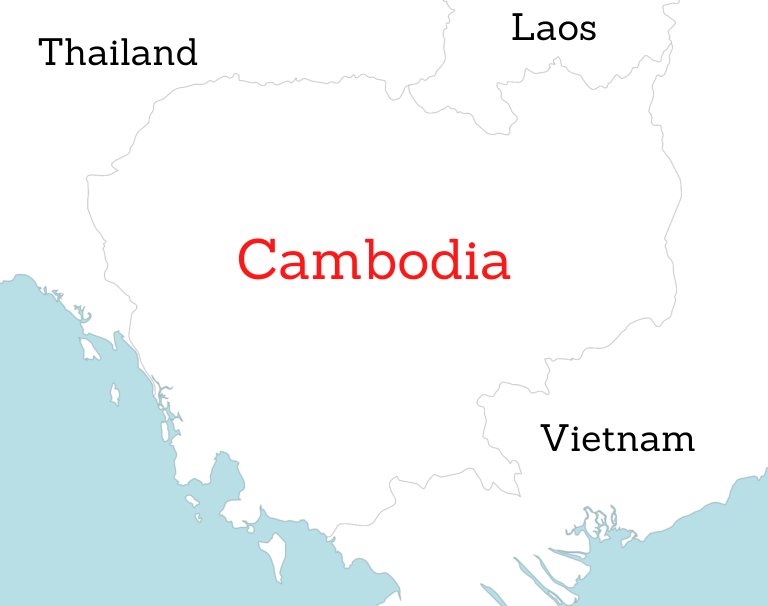Rubies from Cambodia

Cambodia rubies should be noted as almost synonymous with Thailand rubies because the mines for both are located around the same border between the two countries. Moreover, many of Cambodia’s mines were formerly Thailand’s until 1907*, including Pailin. As such, the features of:
- A deeper, darker red.
- Appear eye-clean more often than marble-hosted (low iron, high chromium) stones.
- Lack of fluorescence due to being metasomatic (high iron).
Are equally valid descriptors for these rubies.
History of Ruby Mining in Cambodia
Under the dictatorship of Khmer Rouge, mining in Pailin reached a high point in the 1970’s. By the time he was ousted from power in 1999, the ruby sources in Pailin had been depleted. An additional problem for current mining efforts are the remaining landmines from the dictatorship. Many individuals have taken the risk of losing life and limb when faced with these landmines in hopes of finding an exquisite gem.
Mining Capabilities

With most of the ruby mines being located in mountains and densely forested areas, mechanized and streamlined mining prove to be difficult. Cambodia is one of the most dangerous areas in the world to mine in while consistently providing fine rubies.
Miners will use high pressure water aimed directly at the ground to break up the earth into smaller, more manageable chunks. The water also helps serve to begin to loosen the chunks and create mud. The mud then goes through a piece of equipment that separates the materials based on weight, so anything that is light will be washed away, leaving the heavy pieces to be inspected more closely.

Mining Locations
There are two main rivers in the Pailin area. Much of the rubies in this area stem from volcanic activity that dates back centuries. Quite often, gemstone and gold miners like to spend time in the rivers, collecting the sand to sift looking for precious gemstones. When the weather is not too hot, at the end of the dry season, many people come to the river to “wash the gravel” including small family farmers hoping to make a great find of natural rubies that they can sell.
Sources:
*Russell Shor, Robert Weldon. “Ruby and Sapphire Production and Distribution: A Quarter Century of Change.” Gems and Gemology. 2009.

